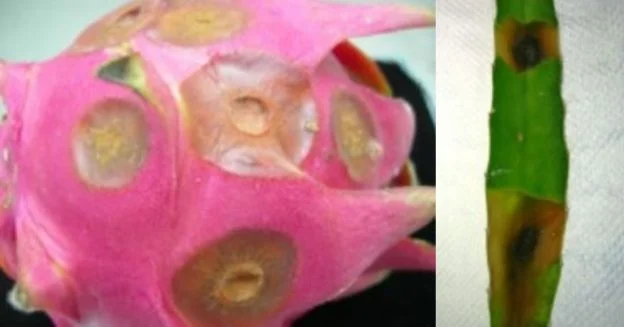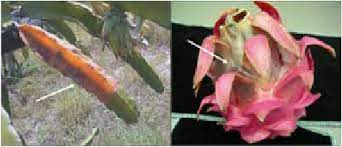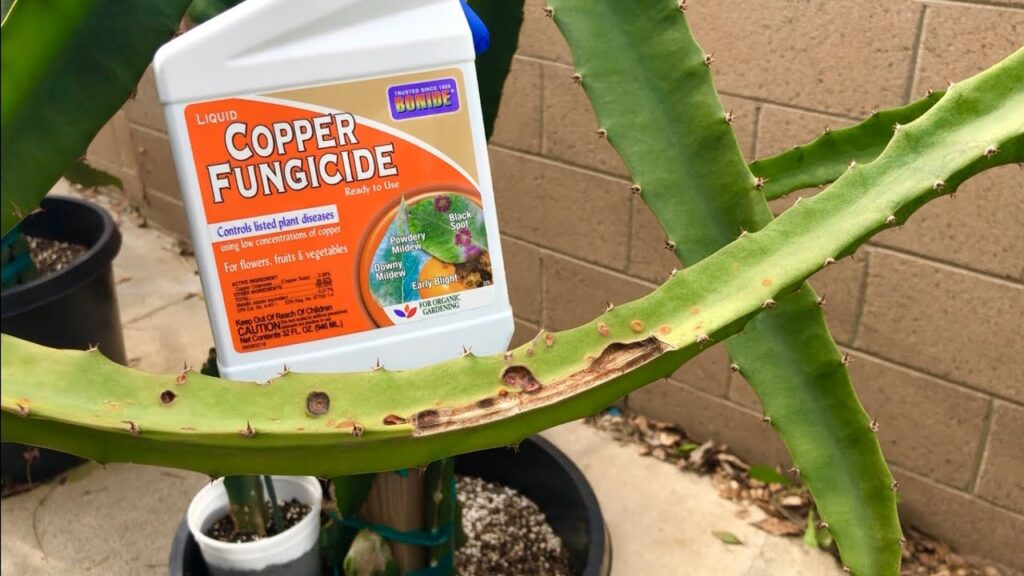Dragon fruit, is renowned for its vibrant appearance and unique taste. However, its cultivation is not without challenges, regarding fungicidal elixirs. These elixirs play a crucial role in managing fungal diseases that can affect the health and yield of dragon fruit plants. In this comprehensive guide, we delve into fungicidal elixirs and how they can be effectively utilized to optimize dragon fruit cultivation practices.
Table of Contents
Understanding the Importance of Fungicidal Elixirs
Before delving into specific fungicidal elixirs for dragon fruit, it’s essential to grasp the significance of these solutions in agriculture. Fungicidal are formulations designed to control and eradicate fungal pathogens that threaten plant health. In the context of dragon fruit cultivation, fungal diseases such as anthracnose, stem rot, and powdery mildew pose significant challenges to growers worldwide.
Common Fungal Diseases Affecting Dragon Fruit

1. Anthracnose
The fungus Colletotrichum gloeosporioides is what causes anthracnose. It shows up as dark spots on the fruit is skin and causes it to rot early, which means the crop loses its yield.

2. Stem Rot
Stem rot, primarily caused by Fusarium species, results in the decay of stem tissues, weakening the plant’s structural integrity and compromising its ability to thrive.

3. Powdery Mildew
A variety of fungal species, including Sphaerotheca spp., cause powdery mildew, which appears as white powdery patches on leaves and stems and prevents the absorption of nutrients.
Utilizing Fungicidal Elixirs in Dragon Fruit Cultivation
1. Copper-Based Fungicides
Copper-based fungicidal elixirs are widely used in dragon fruit cultivation for their broad-spectrum activity against fungal pathogens. Compounds like copper oxychloride and copper hydroxide effectively control anthracnose and powdery mildew.
2. Triazole Fungicides
Triazole fungicides, like tebuconazole and propiconazole, protect against fungal diseases throughout the body by stopping the production of ergosterol, which is an important part of fungal cell membranes. These fungicidal elixirs are particularly effective against stem rot in dragon fruit plants.
3. Biological Control Agents
Biological control agents like Trichoderma spp. and Bacillus spp. are long-term alternatives to traditional fungicides that can be used to control fungal diseases in dragon fruit farming. These beneficial microorganisms antagonize pathogenic fungi, thereby reducing disease incidence and promoting plant health.

Best Practices for Application
Effective application of fungicides are paramount to achieve optimal results in dragon fruit cultivation. Here are some best practices to consider:
- Timing: Apply fungicidal elixirs preventatively during periods of high disease pressure or at the first sign of fungal infection to mitigate disease progression.
- Coverage: Ensure thorough coverage of plant surfaces, including leaves, stems, and fruits, to maximize the efficacy of fungicidal treatments.
- Rotation: Rotate fungicidal elixirs with different modes of action to prevent the development of resistance in fungal populations and maintain long-term efficacy.
- Adjuvants: Incorporate adjuvants such as surfactants or stickers to enhance fungicidal adhesion and penetration, especially in challenging environmental conditions.
Environmental Considerations
While fungicidal elixirs are valuable tools in disease management, it’s essential to consider their environmental impact and potential risks. Excessive or indiscriminate use of fungicidal treatments can lead to the buildup of pesticide residues in the soil and water, adversely affecting ecosystem health and biodiversity.
Integrated Pest Management (IPM) Approach
Adopting an integrated pest management (IPM) approach is fundamental for sustainable dragon fruit cultivation. IPM strategies stress using a range of control methods together, including cultural practices, biological control, and selective fungicidal applications, to cut down on the need for chemicals and keep the ecosystem in balance.
Conclusion
In conclusion, the effective management of fungal diseases in dragon fruit cultivation requires a multifaceted approach, with fungicidal elixirs playing a central role in disease control strategies. By understanding the principles of disease management, selecting appropriate fungicidal treatments, and implementing best practices for application, growers can safeguard their dragon fruit crops against destructive fungal pathogens while promoting sustainable agricultural practices. Embracing innovation and environmental stewardship will pave the way for a thriving and resilient dragon fruit industry in the years to come.
